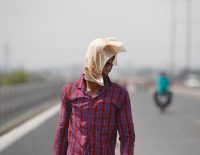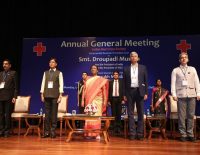1 in every 3 kids to suffer from myopia by 2030 in India

As many as one-third of all urban children in India aged 5-15 years are expected to suffer from myopia by 2030. Based on the ongoing trends, one out of every two children in the country will be myopic by 2050.
During the ongoing Myopia Awareness Week, the eye experts said that one out of every two children in the country will be myopic by 2050. Studies show that in the 20-year period from 1999 to 2019, the incidence of myopia among urban children has tripled in India, from 4.44% to 21.15%, respectively.
Dr. Smit M Bavariya, Cataract Surgeon with Dr Agarwals Eye Hospital, said, “We have been witnessing a steady increase in the number of myopia cases in urban children over the last few years. About 120,000 myopic patients under the age of 20 visit Dr Agarwal’s Eye Hospital every year across India. The prevalence of myopia in 5 to 15-year-old urban children increased from 4.4% in 1999 to 21.1% in 2019. Our predictions, based on the slope of 0.8% every year, indicate that the prevalence of myopia among urban children will increase to 31.89% in 2030, 40% in 2040 and 48.1% in 2050. This means that one out of every two children in India will be suffering from myopia in the next 25 years, up from one in four currently.”
A sedentary lifestyle, prolonged screen usage, and reduced outdoor activities are contributing to the rapid rise in myopia cases in children, according to the doctor. He said: “The root causes of this escalating issue are multifaceted. Excessive screen time stimulates the eyes, retina, and brain of children, leading to accelerated myopic changes due to rapid eyeball growth. Additionally, a decline in outdoor activities deprives children of essential natural light exposure crucial for healthy eye development.”
Dr. Smit M Bavariya added: “Recognizing the symptoms of myopia in children is important for early intervention. Symptoms include blurry vision, difficulty seeing distant objects, eye strain, headaches, and fatigue—particularly after prolonged screen use. Though the condition cannot be cured, it can be helped with glasses or contact lenses. Laser vision correction treatment can also be opted after the age of 19 years. But it is important to have regular eye check-up, encourage children for outdoor activities to balance screen time, and consider interventions like atropine eye drops or myopia control glasses to slow further progression of myopia.”







